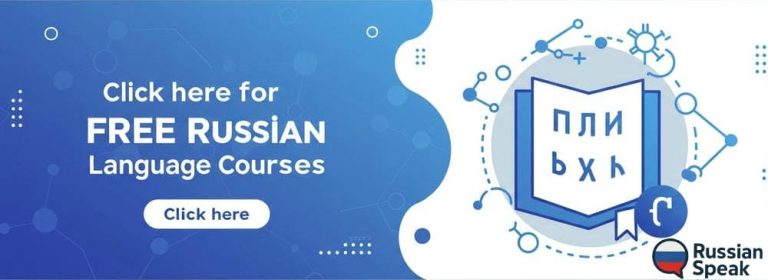Exploring Russian historical texts offers a unique avenue for language development. These works provide insights into the evolution of vocabulary and syntax while reflecting societal norms and values. By engaging with notable pieces such as “The Tale of Igor’s Campaign” or Tolstoy’s “War and Peace,” learners can enhance their comprehension and communication skills. Yet, the complexities of these texts pose challenges that require careful consideration. What strategies can one employ to navigate this rich linguistic landscape?
Table of Contents
ToggleThe Importance of Historical Texts in Language Learning

Many students of Russian focus on modern materials—news articles, films, or social media—to build their language skills. However, historical texts play a crucial role in developing a deeper, more rounded understanding of both the language itself and the culture that shapes it.
Historical texts (исторические тексты, [ees-toh-REE-chees-kee-yeh TEHK-sty]) act as time capsules, preserving the way people thought, spoke, and wrote centuries ago. Reading these works lets learners discover how the Russian language has changed—how certain words have disappeared or shifted in meaning, and how grammar and sentence structure have evolved. For example, older texts might use vocabulary like “дщерь” (daughter, pronounced [dshcher’]) instead of the modern “дочь” ([doch’]), or forms like “еще” ([ye-SHCHO], still, yet) in contexts that seem unusual today.
Through these texts, learners gain access to the cultural context (культурный контекст [kool-TOOR-nee KON-teekst]) of earlier eras. They see firsthand the societal values (ценности общества [TSEN-nos-tee OB-shest-va]), customs (обычаи [a-BY-chai-ee]), and beliefs (убеждения [oo-bezh-DYEN-ee-ya]) that shaped Russian-speaking communities. This kind of immersion is not always possible with contemporary sources, as modern language often assumes knowledge of the past.
Studying historical Russian also builds a richer vocabulary (богатый словарный запас [ba-GA-tee sloh-VAR-nee za-PAS]) and strengthens understanding of grammar (грамматика [gra-MA-ti-ka]). Learners encounter forms and words rarely used today, such as “сей” ([sey], this), “оную” ([O-noo-yu], that), or poetic constructions. Exploring these helps learners appreciate why modern Russian looks and sounds the way it does.
By connecting to old texts, students experience a sense of continuity with Russian speakers from the past. They can trace the roots of certain phrases or idioms (идиомы [ee-dee-OH-my]) and understand how historical events shaped language use. For example, seeing how “отечество” ([a-TYECH-eh-stvo], fatherland) is used in patriotic literature deepens understanding of national identity.
Key Russian Historical Texts to Explore
To truly appreciate the richness of Russian heritage through language, it is valuable to read some of its foundational works:
- “The Tale of Igor’s Campaign” (Слово о полку Игореве [SLOH-vo o pol-KOO EE-go-re-ve])
- Written in the late 12th century, this epic poem recounts Prince Igor’s failed military campaign against invading tribes. The text is filled with archaic words and poetic imagery. It provides a snapshot of medieval society, highlighting themes like loyalty (верность [VYER-nost’]), bravery (храбрость [KHRA-brost’]), and fate (судьба [sood-BA]).
- Example phrase: “Не буйство есть храбрость, но разум!” (“Bravery is not recklessness, but reason!”)
- “The Captain’s Daughter” by Alexander Pushkin (Капитанская дочка [ka-pee-TAN-ska-ya DOCH-ka])
- Published in 1836, this historical novel blends fiction with real events from the Pugachev Rebellion. Pushkin’s accessible yet elegant language bridges old and new Russian styles. The book examines freedom (свобода [sva-BO-da]), honor (честь [chest’]), and personal responsibility (личная ответственность [LEECH-na-ya ot-VYET-stven-nost’]).
- Example phrase: “Береги честь смолоду.” (“Protect your honor from a young age.”)
- “War and Peace” by Leo Tolstoy (Война и мир [vay-NA ee MEER])
- This monumental novel, published between 1865 and 1869, is set during the Napoleonic Wars. It gives readers a vivid picture of Russian life at all levels of society—from peasants (крестьяне [krees-TYA-nye]) to aristocrats (аристократы [a-ree-sto-KRA-ty]). The book explores themes like destiny, love (любовь [lyu-BOV’]), and history itself.
- Example phrase: “Все проходит, и это пройдет.” (“Everything passes, and this will pass too.”)
By engaging with these texts, learners not only improve their grasp of Russian grammar and vocabulary but also develop a nuanced understanding of cultural identity (культурная идентичность [kool-TOOR-na-ya ee-den-TEECH-nost’]) and historical perspective. Reading historical works allows language learners to see beyond everyday conversation and uncover the deeper layers that make Russian a living record of its people’s journey through time.
Analyzing Language Evolution Through Historical Documents
Analyzing the evolution of language in Russian historical documents allows us to see how Russian society changed over centuries. Language is not fixed; it shifts in response to politics, culture, and contact with other nations. Each document—from medieval chronicles to Soviet-era decrees—shows unique features in grammar, vocabulary, and style that reflect its era.
For example, early texts like the Повесть временных лет (Povest’ vremennykh let, “The Tale of Bygone Years,” pronounced: poh-VEST’ vrem-YEN-nykh let) written in Old East Slavic, use words and grammar forms that would sound strange to modern Russians. Words like князь (knyaz’, “prince”) and град (grad, “city”) were common. The structure was often more complex, with longer sentences and a heavy influence from Church Slavonic—a liturgical language used by the Orthodox Church.
As Russia expanded and interacted with Western Europe, especially in the time of Peter the Great (Пётр Первый, Pyotr Pervyy), the language absorbed many loanwords. For example:
- офицер (ofitser, “officer”) from French officier
- компания (kompaniya, “company”) from French compagnie
- театр (teatr, “theater”) from French théâtre
These borrowings show how Russian society was opening up to European ideas and technologies.
During the Soviet period (Советский период, Sovetskiy period), language became a tool of ideology. New phrases appeared to reflect socialist values:
- товарищ (tovarishch, “comrade”)
- пятилетка (pyatiletka, “five-year plan”)
- колхоз (kolkhoz, “collective farm”)
Some traditional or religious words were pushed out of everyday use, and new official slogans shaped public speech.
Major spelling reforms also marked Russian language history. In 1918, spelling was simplified: certain letters like і, ѣ, and ѳ were dropped. This reform made literacy easier but also separated modern texts from older ones.
When reading historical documents, you’ll notice changes in:
- Vocabulary: New words enter, old words fade away.
- Grammar: Sentence structure becomes simpler over time.
- Syntax: Word order slowly shifts to match spoken Russian.
By tracing these changes, we can see how Russians reacted to invasions, revolutions, modernization, and globalization. This gives language learners a richer understanding of not just words and rules, but also the identity and values behind them. Russian is living proof that language mirrors life—and each generation leaves its mark in the words they choose.
Vocabulary Building With Historical Context
Historical context is essential for anyone aiming to master Russian vocabulary. By connecting words to the times and events that shaped them, learners gain a layer of meaning that goes beyond memorization. This kind of learning helps you see why certain words emerged, how their meanings shifted, and what they meant to people in specific eras.
For example, understanding the Russian Revolution of 1917 provides insight into the vocabulary of upheaval, authority, and reform. Terms like “революция” (revolution) or “совет” (soviet/council) aren’t just dictionary entries—they are loaded with the emotional and political weight of their time.
Why Historical Context Matters
- Deeper Understanding: Words tied to historical events carry connotations that reveal social attitudes and political realities.
- Retention: Words are easier to remember when linked with stories or significant events.
- Practical Usage: You’ll better understand literature, news, and conversation about history or politics.
Example: Russian Revolution Vocabulary
Below is a table of key Russian terms associated with major historical events, especially the Russian Revolution and Soviet era. Each term includes its Cyrillic spelling, English phonetic pronunciation, and English definition.
| Russian (Cyrillic) | Pronunciation | English Definition |
|---|---|---|
| революция | revolyutsiya | revolution |
| совет | sovet | council (Soviet) |
| партия | partiya | party (political) |
| рабочий | rabochiy | worker |
| крестьянин | krest’yanin | peasant |
| буржуазия | burzhuaziya | bourgeoisie |
| пролетариат | proletariat | proletariat (working class) |
| товарищ | tovarishch | comrade |
| власть | vlast’ | power, authority |
| диктатура | diktatura | dictatorship |
| агитация | agitatsiya | agitation, propaganda |
| красный | krasnyy | red (symbolic of Communists) |
| белый | belyy | white (symbolic of anti-Bolsheviks) |
| национализация | natsionalizatsiya | nationalization |
| коллективизация | kollektivizatsiya | collectivization |
By learning these terms within their historical setting, you gain not just vocabulary, but also the cultural and emotional resonance that they carried for people living through those times. This enriches your language skills and deepens your understanding of Russian society and history.
Cultural Insights Gained From Historical Writings
Exploring Russian historical writings offers a vivid portrait of the nation’s cultural development, highlighting how traditions, values, and social norms have evolved over centuries. These documents—ranging from medieval chronicles (летописи, letopisi) to personal memoirs (мемуары, memuary)—provide more than just a record of events. They reveal what mattered most to people at different times, how they saw themselves, and how they interacted with the world around them.
One clear example is the Повесть временных лет (Povest’ vremennykh let, “The Tale of Bygone Years”), a key chronicle from the early 12th century. Through its stories, readers learn about the rise of Kievan Rus’, early Russian statehood, and the importance of Christianization (крещение, kreshcheniye) in shaping national identity. Keywords like князь (knyaz’, “prince”) and дружина (druzhina, “princely retinue”) appear often, reflecting the hierarchical nature of society and the role of military elites.
Historical texts also highlight the influence of foreign cultures—Mongol, Byzantine, Western European—on Russian society. Words such as царь (tsar, “emperor” or “czar”) and собор (sobor, “cathedral” or “council”) entered the language as political and religious structures shifted, demonstrating how outside forces shaped Russian customs and governance.
Personal writings from later centuries, like the diaries of noblewomen or soldiers’ letters during wartime, give us a sense of everyday life. They show how ordinary Russians responded to change, whether it was serfdom reforms (реформа, reforma), war (война, voyna), or revolution (революция, revolyutsiya). Through phrases such as семья (sem’ya, “family”), труд (trud, “labor”), and свобода (svoboda, “freedom”), we see how people expressed their hopes and anxieties.
Some interesting cultural insights include:
- The deep role of faith and the Orthodox Church (Православная церковь, Pravoslavnaya tserkov’) in daily life and politics.
- The concept of душа (dusha, “soul”), which appears frequently in literature and letters, showing a focus on inner life and morality.
- The tradition of соборность (sobornost’), a uniquely Russian idea about communal unity and spiritual togetherness.
By reading these historical writings, learners not only improve their Russian language skills but also gain a richer perspective on why modern Russia thinks and acts as it does today. Each era’s documents add a new layer to our understanding, weaving together stories of resilience (стойкость, stoykost’), adaptation, and cultural pride.
Methods for Studying Historical Texts

Studying historical texts is a complex process that involves several well-established methods, each designed to help readers understand not just the words on the page, but also their broader significance. By using a combination of analytical and practical strategies, students and researchers can uncover the rich layers of meaning within these documents.
One primary method is textual analysis (Russian: текстовый анализ, [tekst-ovyy analiz]), which involves closely examining the language, structure, and style of a historical document. This means paying attention to the choice of words (словарный состав, slovarnyy sostav), sentence patterns (структура предложения, struktura predlozheniya), and rhetorical devices (риторические средства, ritoricheskiye sredstva) used by the author. Analyzing these elements helps reveal the author’s intentions (намерения автора, namereniya avtora), biases (предвзятость, predvyatost’), and the influence of the period’s social and political context (социально-политический контекст, sotsial’no-politicheskiy kontekst).
Another crucial strategy is contextualization (контекстуализация, kontekstualizatsiya). This means placing the text within its historical background. To do this effectively, one should research the era in which it was written (эпоха написания, epokha napisaniya), the key events happening at the time (ключевые события, klyuchevyye sobytiya), and the cultural norms that shaped people’s thinking (культурные нормы, kul’turnyye normy). This background information helps clarify why certain ideas or words were used and what impact they had on contemporary readers.
Reading strategies are also important. Skimming (просматривание, prosmatrivaniye) allows you to quickly identify main ideas (основные идеи, osnovnyye idei), while close reading (внимательное чтение, vnimatel’noye chteniye) helps in understanding finer details. Annotating (аннотирование, annotirovaniye) is another helpful technique. By making notes in the margins or highlighting important points, you create a record of your thoughts and questions as you read. Comparing multiple sources (сравнение источников, sravneniye istochnikov) is useful for gaining different perspectives and identifying discrepancies or agreements between texts.
Critical engagement (критическое осмысление, kriticheskoye osmysleniye) deepens your understanding. This involves questioning the reliability of the source (надежность источника, nadezhnost’ istochnika), considering the author’s purpose (цель автора, tsel’ avtora), and reflecting on how the text has been interpreted over time (интерпретация с течением времени, interpretatsiya s techeniyem vremeni).
Some practical tips for studying historical texts include:
- Reading aloud to better grasp old-fashioned language.
- Discussing your findings with others to broaden your viewpoint.
- Looking up unfamiliar words or cultural references for clarity.
By combining these methods—textual analysis, contextualization, effective reading strategies, and critical engagement—you gain not only factual knowledge but also a deeper appreciation for how history is recorded and remembered. Russian terms like анализ текста (analysis of text), исторический контекст (historical context), and критическое мышление (critical thinking) are essential vocabulary for anyone engaging with historical documents in Russian or studying Russian history.
Challenges and Tips for Reading Historical Russian
Steering through the complexities of reading historical Russian texts presents a range of challenges that can daunt even seasoned scholars. The archaic language, unfamiliar syntax, and cultural references require adept reading strategies to navigate effectively.
Scholars often find themselves grappling with obsolete vocabulary and regional dialects that can obscure meaning. Careful text selection becomes essential; choosing works with accessible language or those accompanied by annotations can facilitate understanding.
Furthermore, context is vital; familiarity with historical events and figures enriches the reading experience. By employing a combination of targeted reading strategies, such as skimming for main ideas and annotating passages, readers can enhance comprehension and engage more deeply with the material, ultimately transforming challenges into opportunities for growth.
Connecting Language Skills With Historical Understanding
Understanding historical Russian texts relies on a close connection between language skills and knowledge of the historical context. To truly understand what an author meant, you need more than just the ability to translate words—you must recognize how the language reflects the realities, values, and customs of its time.
For example, many Russian historical texts use words and expressions that are no longer common in modern Russian. A phrase like “крепостное право” (krepostnoye pravo, serfdom) is not just a vocabulary item; it refers to a whole social and economic system that shaped Russian society for centuries. Without knowing what serfdom was, a reader would miss much of the meaning behind discussions of rural life in 19th-century Russia.
Language proficiency allows learners to notice subtle cues in historical writing, such as:
- Идиоматические выражения (idiomaticheskie vyrazheniya — idiomatic expressions): These often carry cultural references or hidden meanings. For instance, the phrase “водить за нос” (vodit’ za nos — to lead by the nose) means to deceive someone.
- Стилистические особенности (stilisticheskiye osobennosti — stylistic features): Writers from different periods often use distinctive styles or formal structures. For example, the grand, ceremonial tone of official tsarist documents (“Указ” — ukaz, decree) contrasts with the more emotional, personal style found in letters or diaries.
- Архаизмы (arkhaizmy — archaisms): Words like “государь” (gosudar’ — sovereign, ruler) or “боярин” (boyarin — boyar/nobleman) might be unfamiliar to a modern speaker but are essential for understanding older texts.
Knowing the historical context makes it easier to understand why certain words were chosen and how events influenced language. For instance:
- During the Soviet period, terms like “пятилетка” (pyatiletka — five-year plan), “колхоз” (kolkhoz — collective farm), and “товарищ” (tovarishch — comrade) became central to daily communication and literature.
- In pre-revolutionary Russia, you might see references to “дворянин” (dvoryanin — nobleman), “купец” (kupets — merchant), or “самодержавие” (samoderzhaviye — autocracy).
By reading historical texts in Russian, learners gain not just language practice but also a window into how people thought, what they valued, and how they understood their place in the world. This makes language learning richer and more meaningful.
Some important Russian words and phrases related to this topic:
- Исторический контекст (istoricheskiy kontekst — historical context)
- Культурное наследие (kul’turnoye naslediye — cultural heritage)
- Общество (obshchestvo — society)
- Политика (politika — politics)
- Революция (revolyutsiya — revolution)
Connecting language and history doesn’t just help with understanding old texts—it also helps learners appreciate the complex journey of Russian culture and identity through time. This deeper knowledge leads to more accurate interpretations and a greater respect for the language’s rich heritage.
Frequently Asked Questions
How Can I Find Translations of Russian Historical Documents?
To find translations of Russian historical documents, one should explore academic databases, libraries, and reputable online platforms. Understanding the historical context enhances comprehension, allowing readers to appreciate the nuances of translated documents more deeply.
Are There Specific Historical Periods to Focus on for Language Learning?
Focusing on Imperial Russia provides insights into cultural heritage, while the Soviet Era highlights revolutionary language and ideology. Both periods enrich understanding of historical context, enhancing language skills through diverse vocabulary and thematic exploration in Russian literature.
Can Studying Historical Texts Help With Modern Conversational Russian?
Studying historical texts can enhance conversational fluency by providing valuable insights into cultural nuances and linguistic evolution. Understanding historical context enriches modern communication, enabling learners to navigate contemporary dialogues with greater depth and appreciation for heritage.
What Are Some Common Misconceptions About Russian History in Texts?
Common misconceptions about Russian history often stem from cultural biases that shape historical narratives. These narratives can oversimplify events, overlook diverse perspectives, and perpetuate stereotypes, ultimately distorting the complex realities of Russia’s past.



